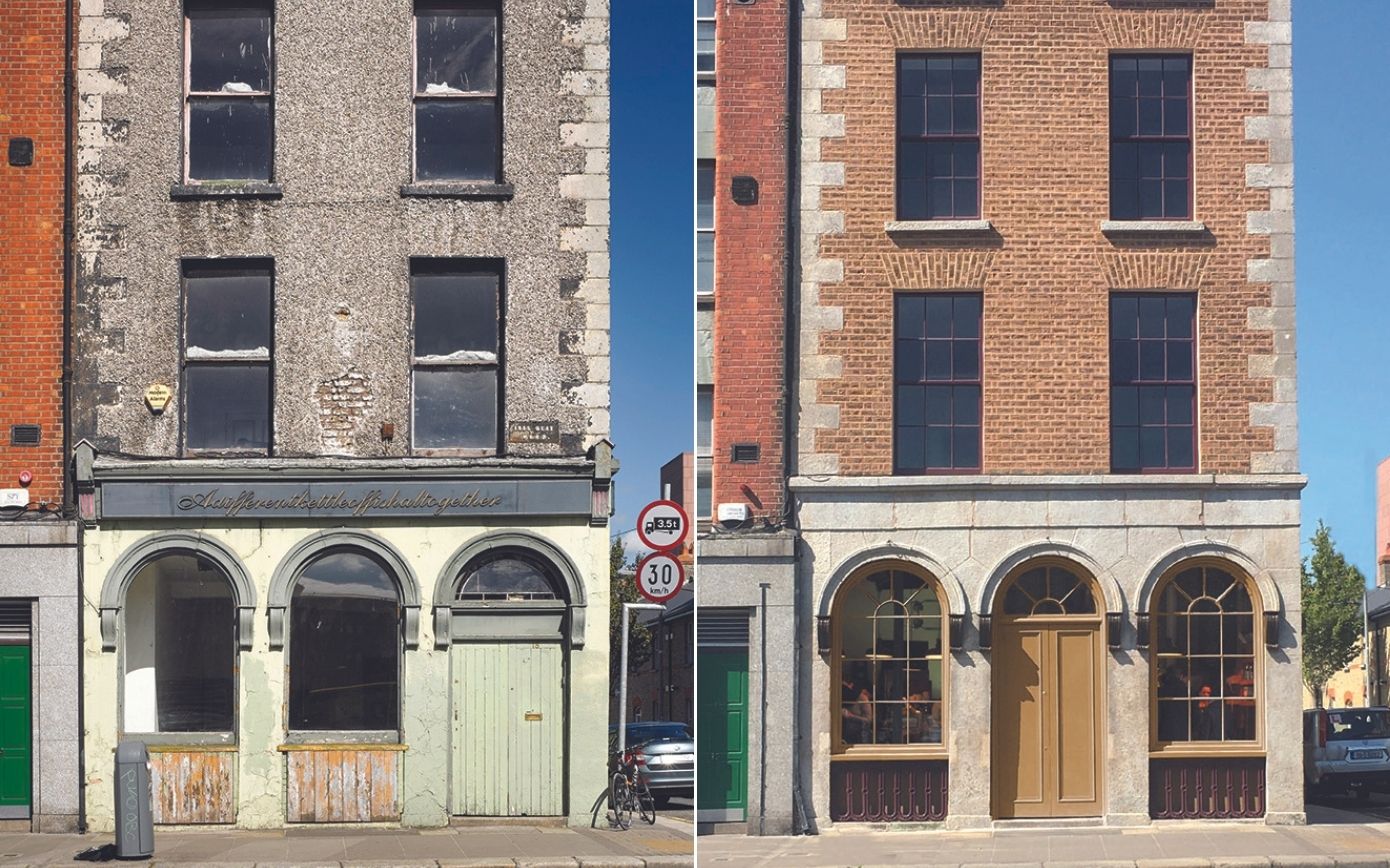Dublin Civic Trust, the built heritage organisation, has won a European Heritage Award/ Europa Nostra Award 2021 for the sensitive conservation of a 19th-century merchant building on Dublin’s Ormond Quay. The award demonstrates how Dublin’s old buildings have significant cultural, economic and environmental value …
“You wouldn’t touch it in a month of Sundays,” says Graham Hickey, Conservation Director of Dublin Civic Trust, describing the state of the dilapidated, four-storey over basement residence on Ormond Quay, which Dublin Civic Trust bought in a receivership sale five years ago. So what was its appeal?
“While Dublin has its Georgian squares, the quotidian architecture is just as much a part of the city. The aim of the 18 Ormond Quay project was to highlight how these modest street buildings, though not a grand statement individually, collectively shape the essential identity of Dublin. All of their elements, from brickwork to windows to plaster details, are specific to our city and can be cost-effectively conserved.”
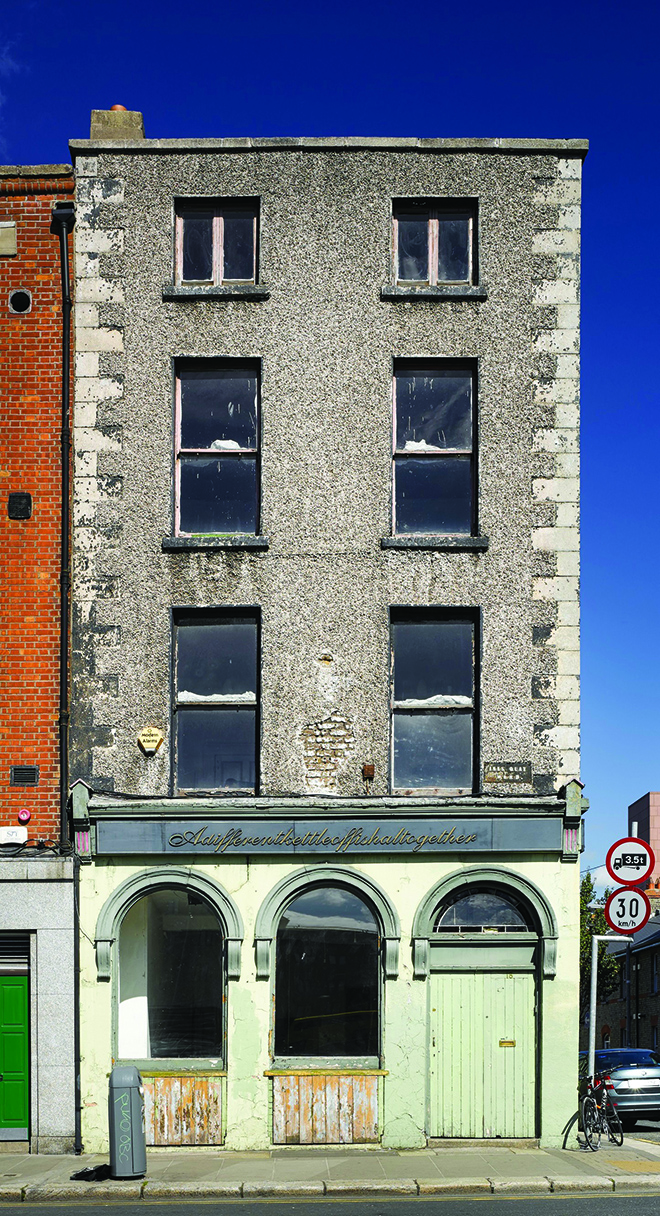
Hickey, whose passion for the built environment was ignited by reading Frank McDonald’s seminal book The Destruction of Dublin (1985), speaks of Ormond Quay’s mystery and intrigue. “Many Dublin residents will have passed the building and known its former proprietors – Watt’s Bros, the hunting and fishing purveyors which closed in 2000, and latterly the art space Adifferentkettleoffishaltogether by artist/councillor Mannix Flynn, which always had engaging window displays in the arcaded shopfronts. Its pebbledash facade showed how easy it is to disfigure a Dublin building. We were able to detect there was an early 19th-century facade underneath, and also that two buildings had been stitched together from two distinct periods.”
Ormond Quay thus became the eighth project Dublin Civic Trust has undertaken since its foundation in 1992. Made up of architects, economists and enthusiasts the aim of the Trust, says Geraldine Walsh, its CEO, is to take a look at the city’s civic building stock – its composition, age and function – and to take on problematic buildings. The Trust aims to turn them around via the process of “enveloping”, making them sellable. The sale of these reinvigorated properties means more of them can be repurposed.
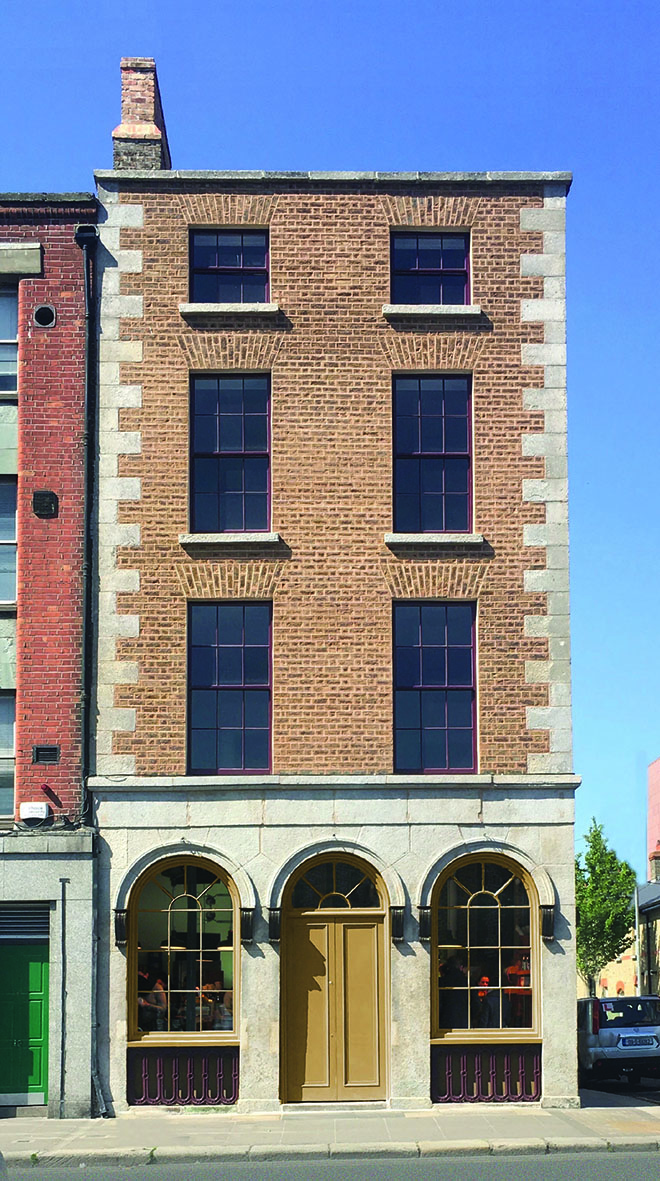
Meticulous research was carried out prior to the first phase of conservation-restoration (overseen by Kelly & Cogan conservation architects and Nolans Group historic building contractors) to ensure it was consistent with the original values of the building. Hickey explains: “The four-storey over basement building at 18 Ormond Quay was constructed in 1843 as a grocer’s shop with solicitors’ chambers and residence above. The building replaced at least two previous houses on the same site since construction first began on Ormond Quay in the 1680s. It features a rare arcaded granite shopfront that is thought to predate the 1840s reconstruction and may date to the 1780s when such shopfronts were popularised by the Wide Streets Commission, Georgian Dublin’s planning body.”
Hickey reveals that challenges encountered at Ormond Quay are not representative of most buildings. “A major aspect was that it was leaning – over 100mm (which in engineering terms is significant) and the building was at risk of partial collapse. The building had to be tethered and stabilised before brick and masonry work could begin. More than €50,000 was spent on steelwork alone.” The original brickwork was restored using a traditional brick pointing technique called “wigging”, the Irish version of tuck pointing. The granite shop front was restored to its original 1843 appearance with research conducted to inform the reinstatement of missing elements, including arched windows and doors, cast iron grilles, and the remaking of the multi-paned, timber shop windows based on the dimensions of surviving windows upstairs. New lamps were also commissioned from Kilkenny blacksmith Paul Devlin to precisely replicate the oil lamps used in Dublin in the early 19th century.
Internally, the original three-storey, three-bedroomed residence was completely refurbished using traditional skills and authentically decorated. By studying other properties of the same era, Irish Fine Art Plasterwork was able to replace the mouldings and cornices (some had been lost in a fire that had gutted a second floor room in the building). David O’Reilly Antique Fireplace Restoration from Francis Street sourced chimney pieces and fireplaces that matched the ghost of the missing fireplaces.
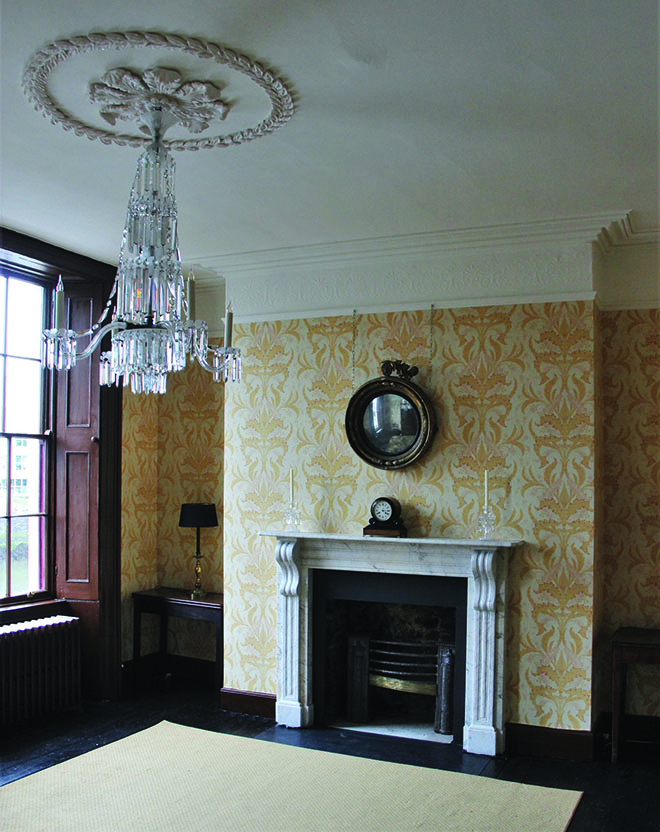
Hickey is delighted with the results: “On the second floor there is a black bullseye chimney piece which fits to perfection and looks very Napoleonic. On the shop-floor is a black corbelled fireplace and on the first floor a white marble one common to Dublin homes at that time.”
The wallpaper is a notable, if surprising, element for many, says Hickey. “There is a perception that the Georgians lived in pale, plain surroundings but in fact by the early 1800s, wallpaper was an elegant foil to the traditional brown furniture of the era. When we stripped back the walls, we could see they had been wallpapered from the day the house was rebuilt in 1843. I couldn’t wait to telephone David Skinner [who specialises in decorative wallpaper conservation and reproduction] to tell him I had the ultimate project for him.”
Accessing The National Archives of the UK in Kew, Skinner returned with samples. For the first floor sitting room a wild acanthus leaf pattern was chosen – the original pattern had been made in Bachelors Walk, Dublin in 1841. “It had literally come home,” says Hickey. On the second floor, the wallpaper was originally from Capel Street and the dainty wallpaper in a third floor room was inspired by a fragment found in a house on Dawson Street.
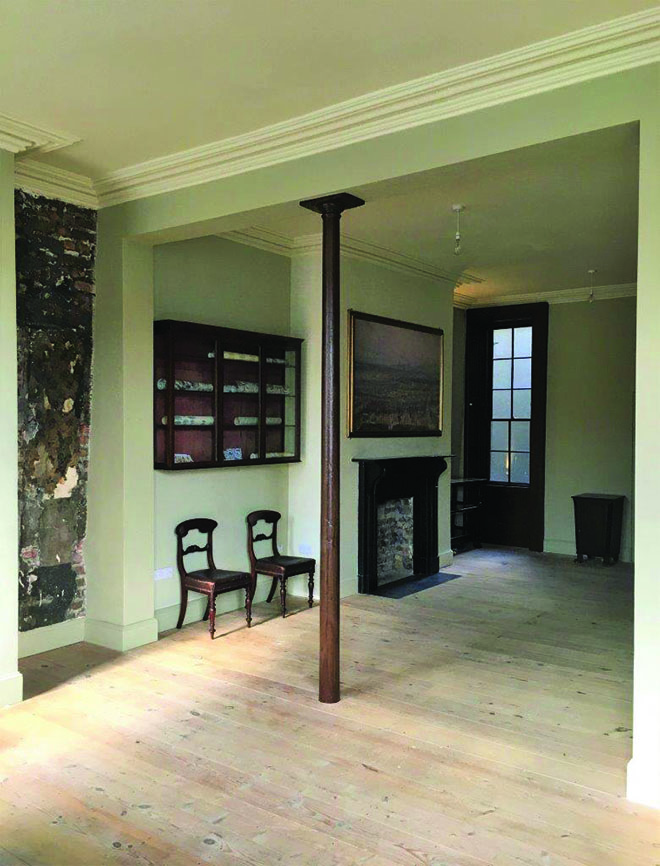
Hickey enthuses over the new skirting boards and shutters. “We take these for granted today, sourcing them in B&Q, but there is a beautiful elegance to the original, finely profiled skirtings. The sash windows, which were missing, have been reproduced by joinery specialists Lambstongue and all windows now have working shutters which are very effective for thermal insulation. As a result, it’s very peaceful inside, even though the house overlooks the busy quays.”
Since completion, the building has been open to the public on Culture Night and Open House Dublin and has latterly hosted a John Clarke pop-up antiques shop. Phase II of the project will involve the conservation of the 1760s-era rear building on Arran Street East for which the Trust is seeking fundraising support for its refurbishment. Its interiors contain rococo-style plasterwork and joinery dating to the mid-18th century.
For now the Trust is delighted with the prestigious Europa Nostra Award. Walsh believes, “Often it takes an outsider to point out what is of intrinsic good on our own doorstep. This is a ringing endorsement that Dublin’s old buildings have significant cultural, economic and environmental value and we must take action to carefully invest in and reuse them.”
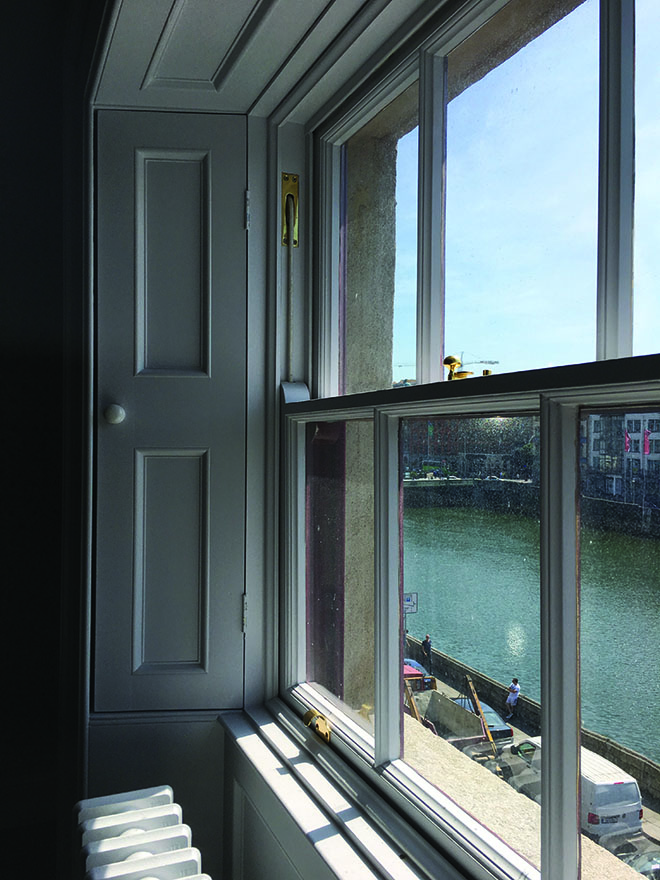
Hickey says Ormond Quay’s contribution to Dublin’s streetscape is to put manners back on the street. “Lockdown revealed how grotty Dublin city centre and its buildings are when devoid of people. This is a cultural problem and a collective responsibility. Ormond Quay’s restoration shows how taking account of history and tradition can bring elegance back to Dublin’s streets.”
LOVETHEGLOSS.IE?
Sign up to our MAILING LIST now for a roundup of the latest fashion, beauty, interiors and entertaining news from THE GLOSS MAGAZINE’s daily dispatches.






